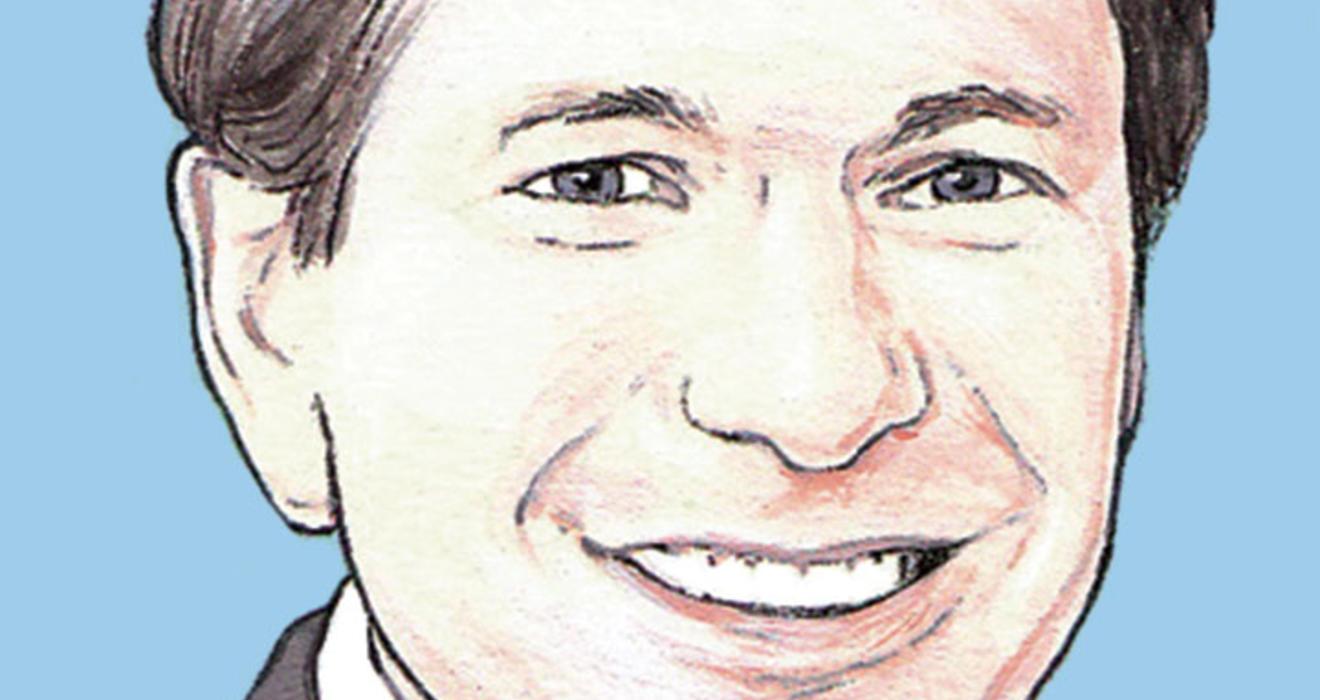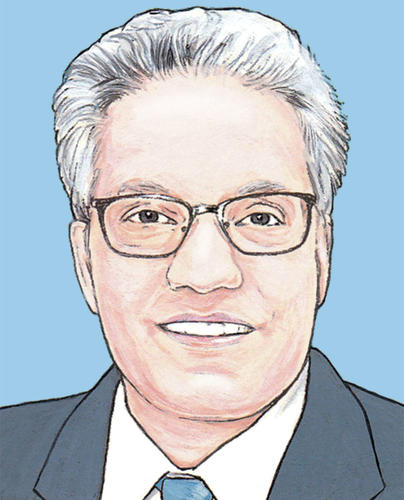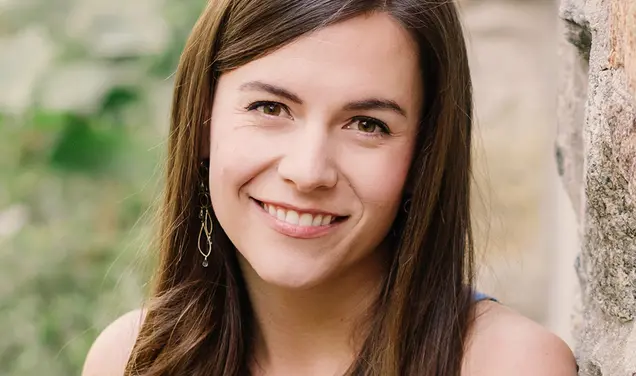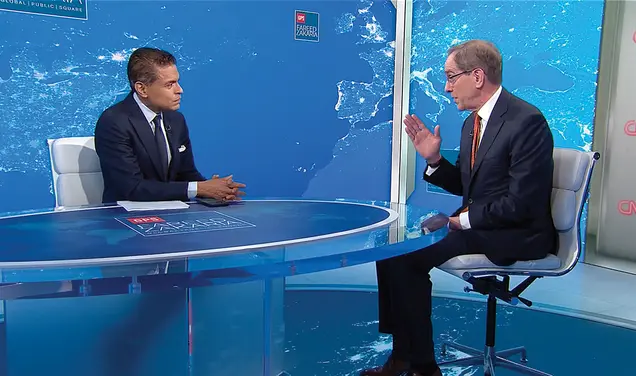
As Jay Famiglietti *92 studies aquifers and drought from his lab in California, Princeton researchers are focused on water as well. Here are three of them.
Kelly Caylor: Sensing the field for the world’s farmers
Farmers around the world are constantly making decisions based on rainfall and other aspects of climate. But those decisions are based on imperfect and incomplete information. That’s where the research of Kelly Caylor, an associate professor of civil and environmental engineering, and his colleagues comes in. They have developed a lightweight, solar-powered pod housing multiple sensors to collect crucial information — such as rainfall, wind speed, and aspects of crop growth — directly from the agricultural field. The data is transmitted via cellphone networks. The Pulsepod — 6.5 inches in diameter — will be commercialized by Arable Labs Inc., a company incorporated by Caylor, Ben Siegfried ’12, and former Princeton postdoc Adam Wolf, and should be available this spring.
Caylor, who has a joint appointment at the Princeton Environmental Institute, and his colleagues will use the pod to improve research on how subsistence farmers in sub-Saharan Africa manage their food security as the climate varies during the season and over a longer term. Caylor hopes the system eventually could give farmers information on factors that affect crop yield, for example, so they could better ration their food supplies, but there’s not enough data to provide that — yet. “We are champing at the bit to get to the point where we can communicate important and actionable information back to subsistence farmers,” he says. Arable also will forge relationships with African companies, including a partnership with a microinsurance firm.
In the United States, Arable will sell the Pulsepod for about $400 (with a $100 lifetime data plan) to software companies that provide agriculture and weather analytics to farmers. Caylor says it will help farmers make better decisions about when and how much to fertilize and irrigate, for example, or when to send a crew to harvest. “We can make those predictions with increasing precision,” he says.
Sankaran Sundaresan: Toward better desalination
According to the United Nations, water use is outpacing population growth so much that by 2025, two-thirds of the world will live under “water-stressed” conditions. One solution to meeting the demand for fresh water is to remove the salt from the seawater that surrounds us. That process, though, requires a lot of energy. Even though today’s best desalination technique, reverse osmosis, can be improved in other ways, it’s reaching its limit in terms of energy efficiency, says engineering professor Sankaran Sundaresan. Using current technology, the electrical energy needed to generate enough water to meet future global needs would require a significant chunk of all additional electrical-energy capacity.
Sundaresan is one of many researchers trying to improve desalination methods. He has worked with engineering school colleagues Pablo Debenedetti and Brian Pethica on a technique that involved forming salt-free ice-like crystals from seawater by using a pair of molecules called a hydrate former and a helper gas, a process that has the potential to produce fresh water with better energy efficiency. The results from that effort were not sufficient to spark a prototype, but are available in the public domain for “someone to pick it up and run with it,” says Sundaresan.
More recently he has been working on a form of forward osmosis. Instead of using pressure to push water through an osmotic membrane, the technique uses a liquid draw solution that sucks the water through the membrane. Then the challenge is to extract that water from the draw solution. The big question: “Are there solutions that allow you to separate the fresh water with much lower energy costs?” he says. He and his colleagues are working to find one that achieves that separation with minimal heating.
Justin Sheffield: Predicting drought and floods
Precipitation falls. Some of it runs off to the ocean. Some stays in the soil. Some forms snowpack that will provide future water resources. Some evaporates directly from the ground or dissipates into the atmosphere in the form of water vapor through plant leaves. But it’s not well understood, for example, why one year is very wet and the next three aren’t, and how humans both affect and are affected by those variations — which makes it hard to predict drought and floods. Justin Sheffield, a research scholar in the Department of Civil and Environmental Engineering, is working to change that.
He is studying the variables in the hydrologic cycle and how they vary over timeframes ranging from a few days to a century and over areas ranging from local to global. Getting the data is difficult. Even rainfall isn’t so easy to measure, since rain is intermittent and the amount can vary quite a bit across a small area. “A few rain gauges scattered around aren’t going to get all the variations,” says Sheffield. Data on factors such as evaporation from the ground or from vegetation are even harder to come by. But just as Famiglietti is doing with his groundwater research, Sheffield and his colleagues are capturing satellite data, which can be analyzed to produce estimates of those factors. That’s a challenge because of inherent errors, uncertainties, and assumptions, he says.
But Sheffield is making headway. In 2012 he and colleagues (including Princeton’s Eric Wood) published a letter in the journal Nature arguing that overall global drought patterns haven’t changed in 60 years, even though in certain regions drought is certainly more severe — challenging a model showing that drought had increased significantly globally due largely to global warming. Those conclusions leave open the possibility that global warming could lead to an increase in overall drought going forward, he says. (Other scientists have disputed Sheffield’s interpretation, saying that historical global drought patterns do show an increase.)
Models Sheffield has helped to develop provide up-to-date information to monitor and forecast the risk of floods and droughts in Africa, Latin America, and the United States. A similar global-monitoring system developed by his group will be up and running in the next few months. Now he’s collaborating with Caylor to combine the data from large-scale monitoring systems and local sensors to improve monitoring and forecasting even more.
Katherine Hobson ’94 is a freelance health and science journalist in Brooklyn, N.Y.








No responses yet